Abstract
OBJECTIVE. This study develops a theoretically justified, network-based model of integrative coordination in community-based health and human services, and it uses this model to measure and compare coordination in six elder service systems. DATA SOURCES AND STUDY SETTING. We collected data between 1989 and 1991 in six Alabama counties, including two major MSAs, two small MSAs, and two rural areas. STUDY DESIGN AND DATA COLLECTION/EXTRACTION METHODS. Our measurement of coordination is based on patterns of interorganizational relationships connecting the agencies constituting a community-based health and human services system. Within each site, we interviewed representatives from these agencies, asking them to indicate client referral, generalized support, and agenda-setting relationships they had developed with each of the other agencies in the system. Using network analysis procedures we then identified the network associated with each of these organizational functions (i.e., service delivery, administration, and planning) in each site, and we assessed levels of coordination in each network. PRINCIPAL FINDINGS. Our measure of integrative coordination is consistent with other indicators of coordination we derive from our data, suggesting its validity. In addition, levels of integrative coordination across sites for each organizational function are generally comparable. Comparisons across sites show integrative coordination to be consistently highest for service delivery networks and lowest for planning networks. CONCLUSIONS. Previous attempts to assess interorganizational coordination without regard to organizational function are subject to misinterpretation. The differing interorganizational dynamics involved in service delivery, administration, and planning appear to generate different patterns of interorganizational relationships, and different levels of coordination.
Full text
PDF



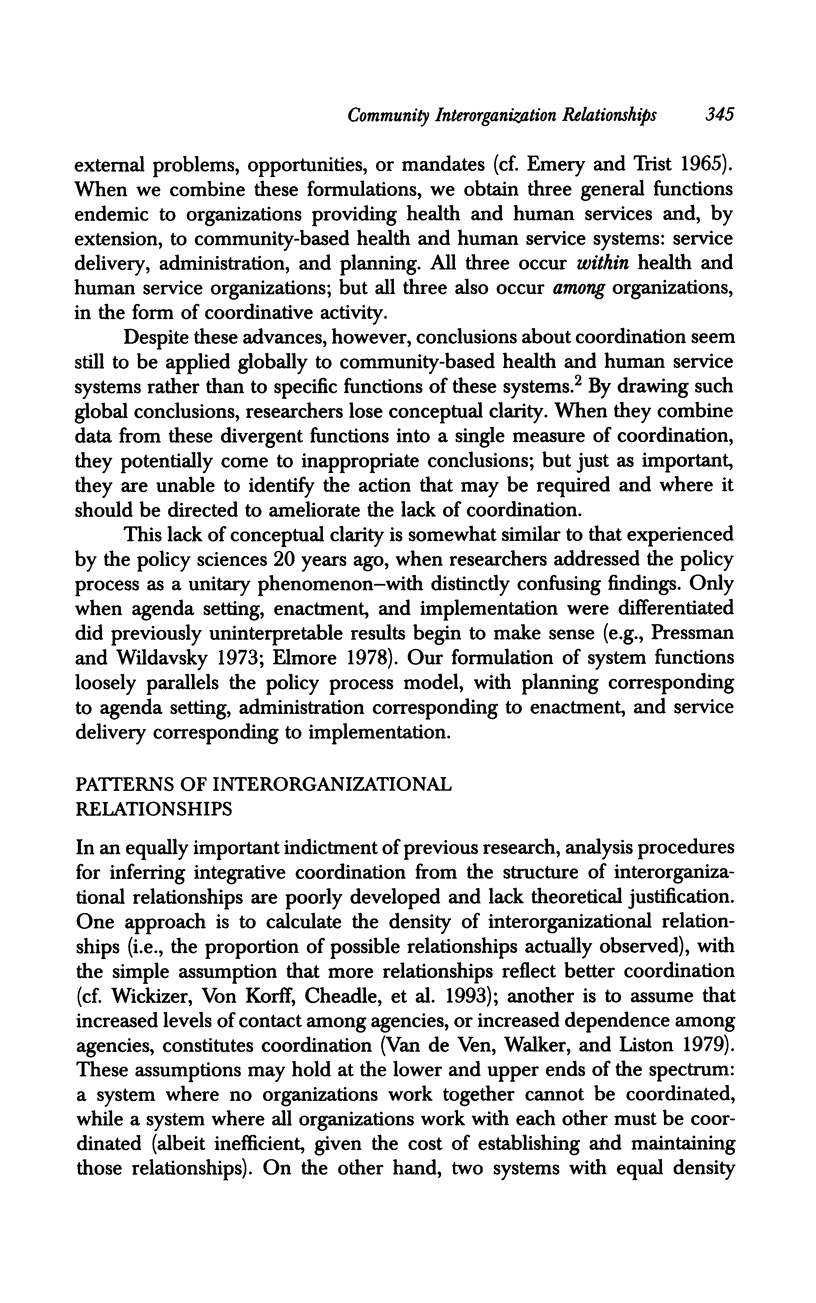



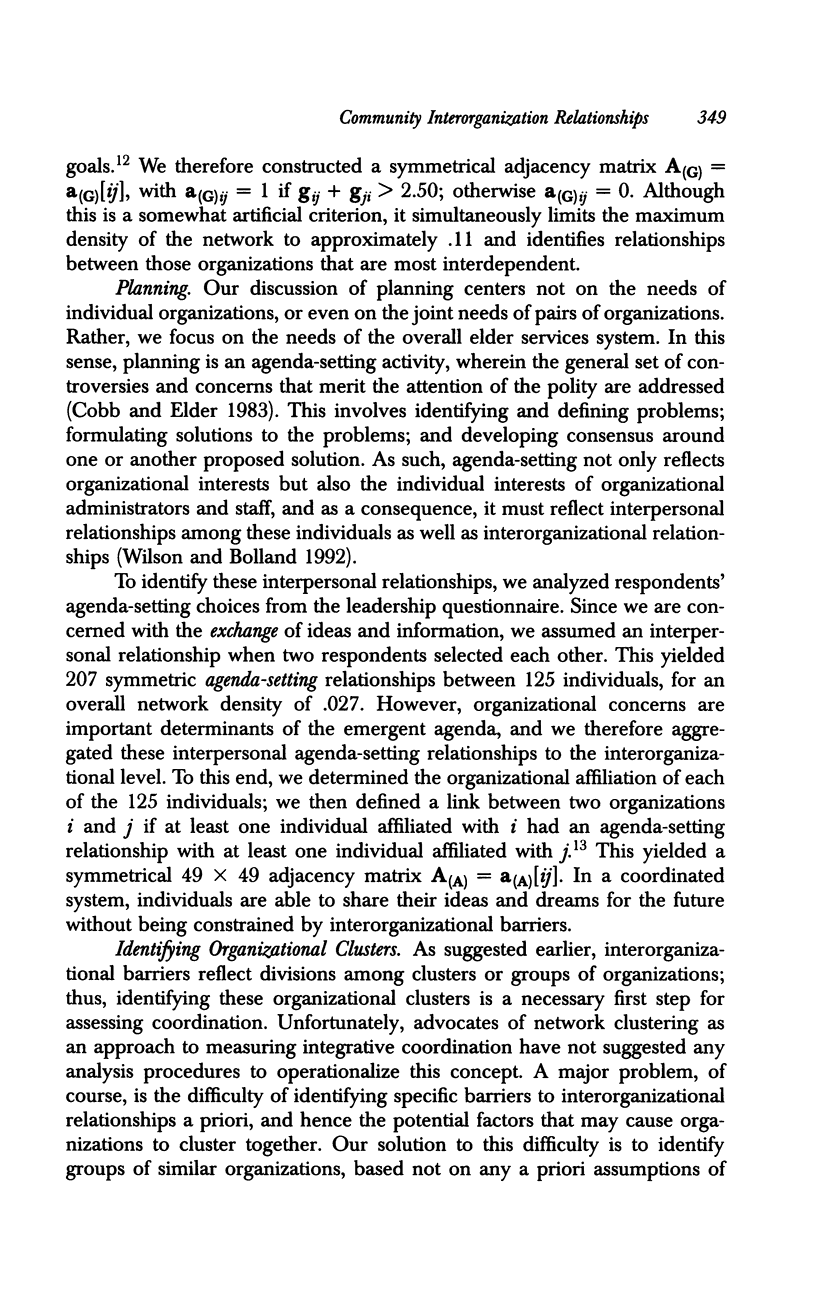

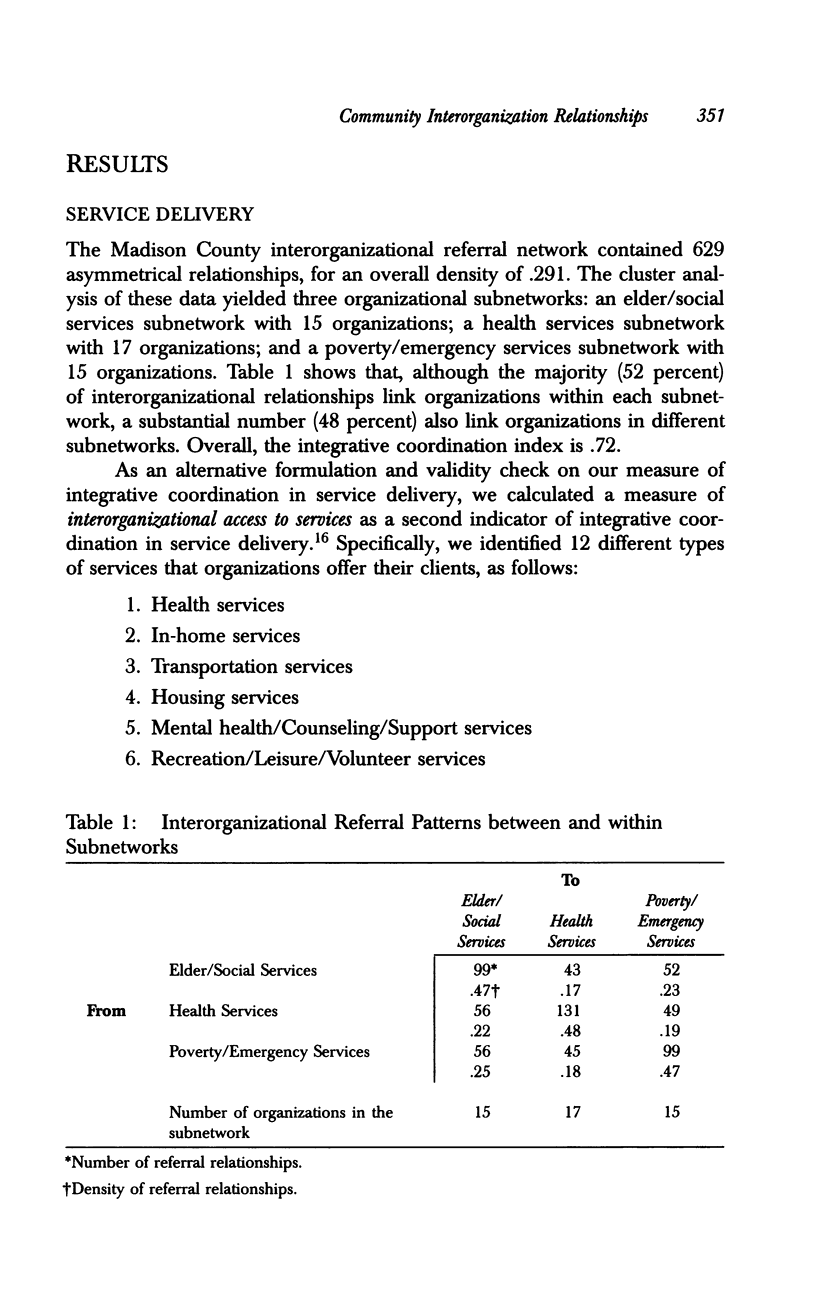


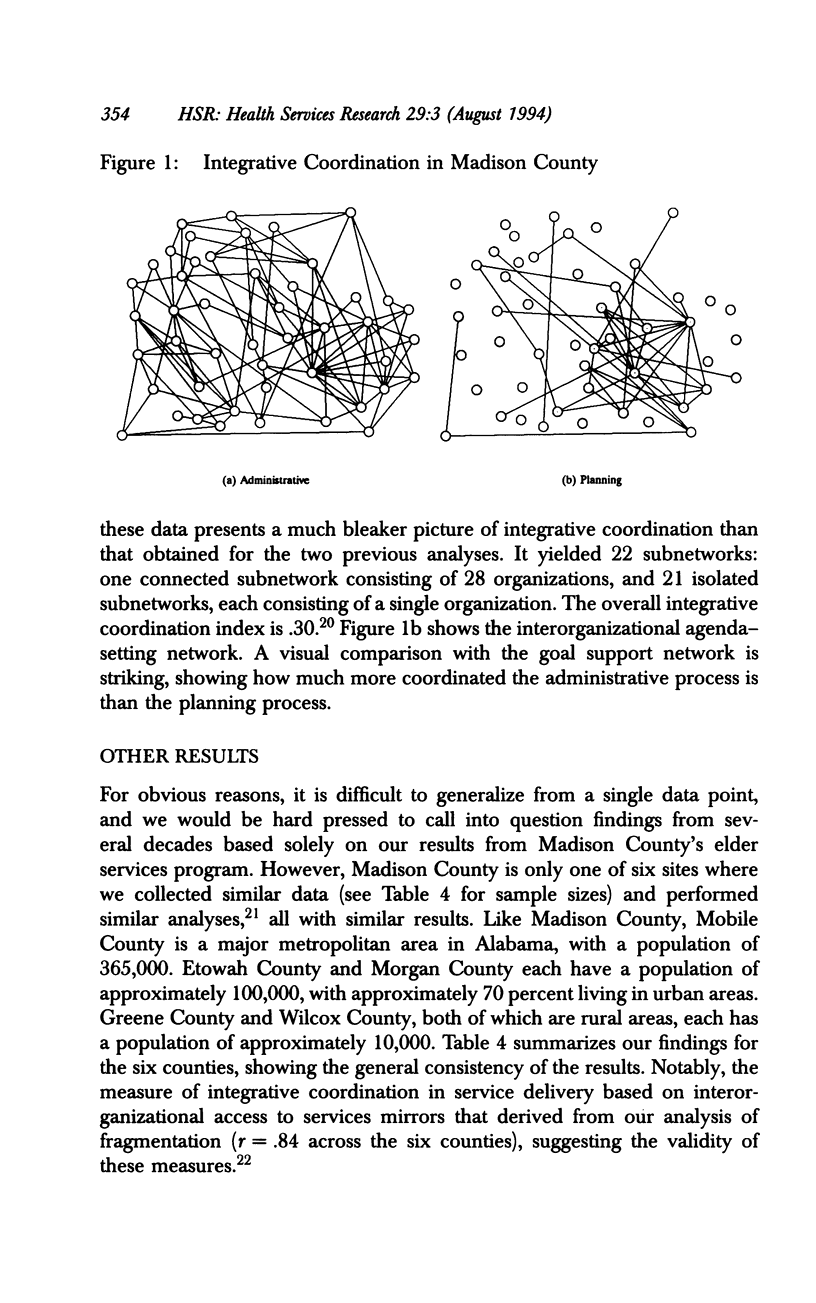

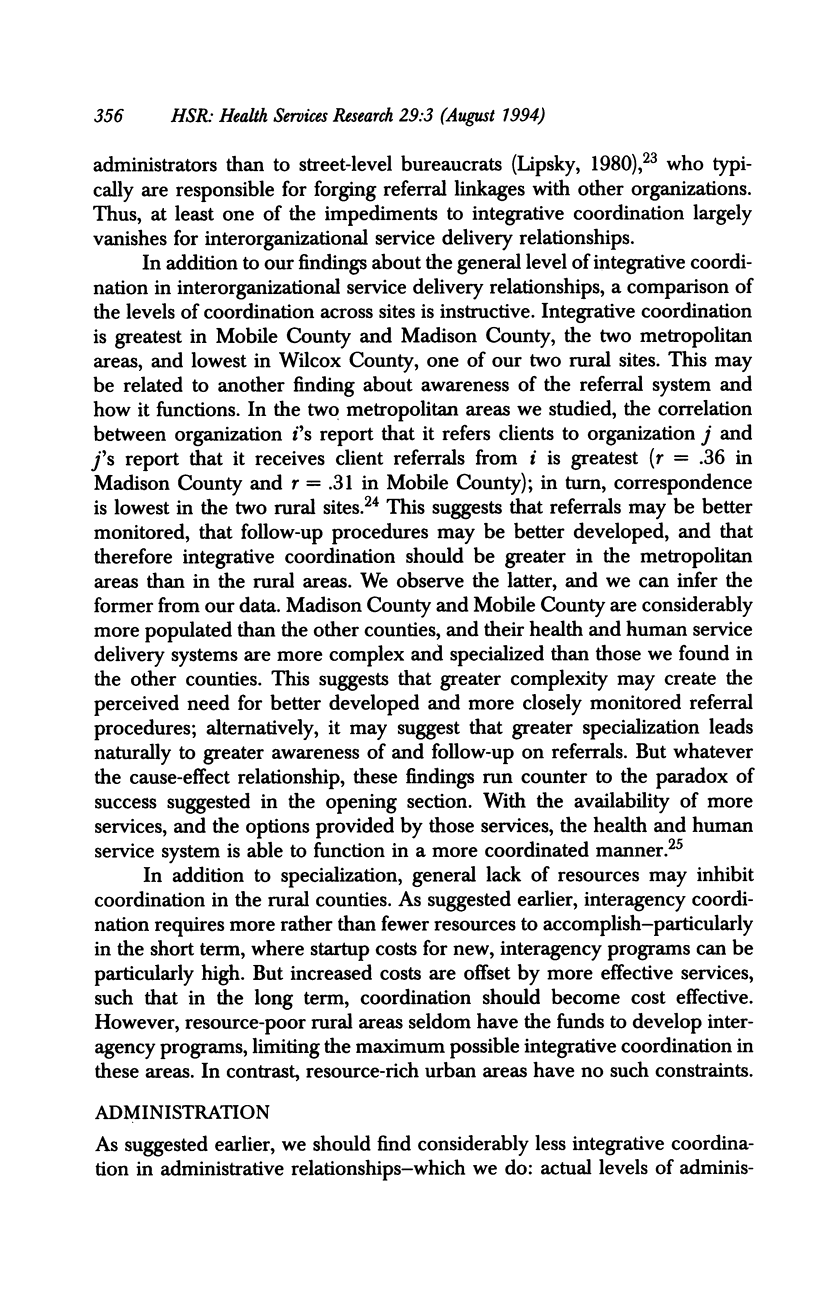



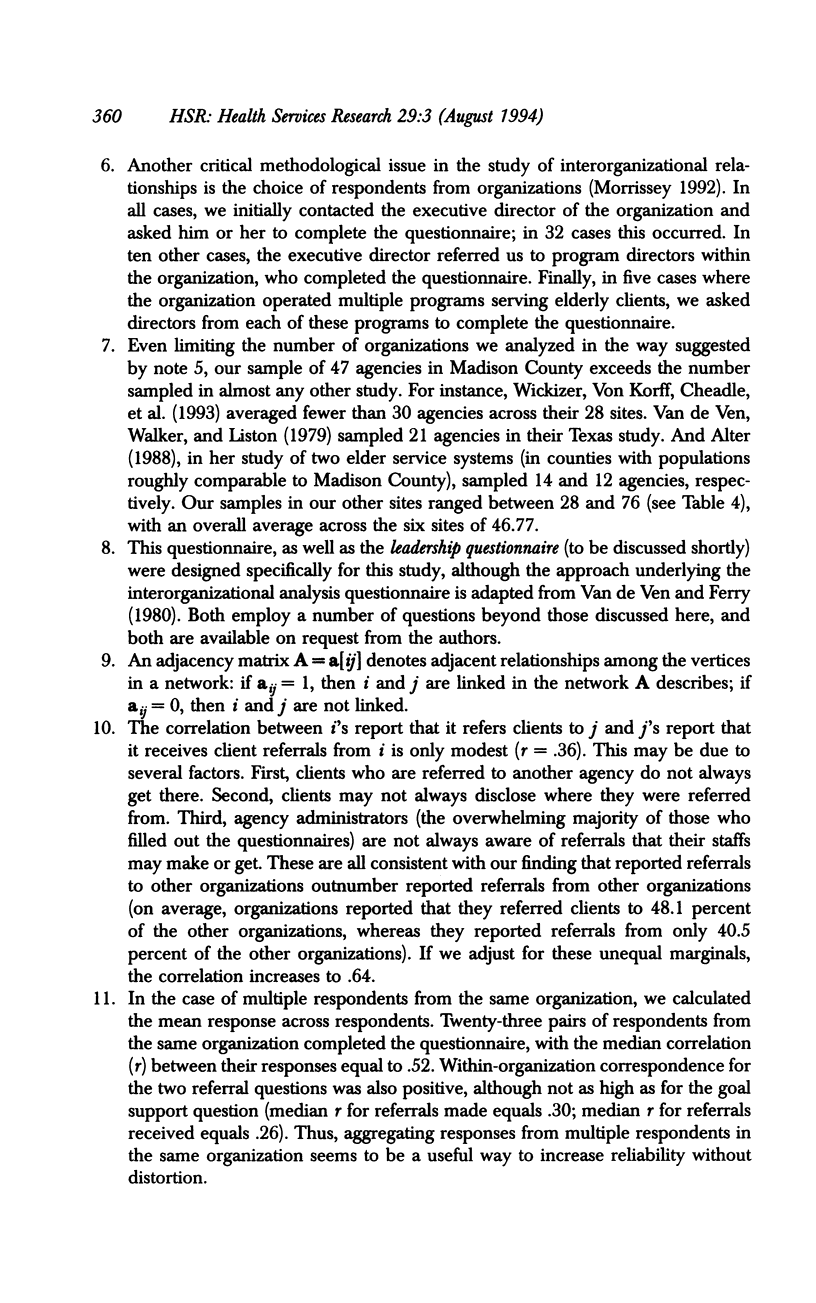




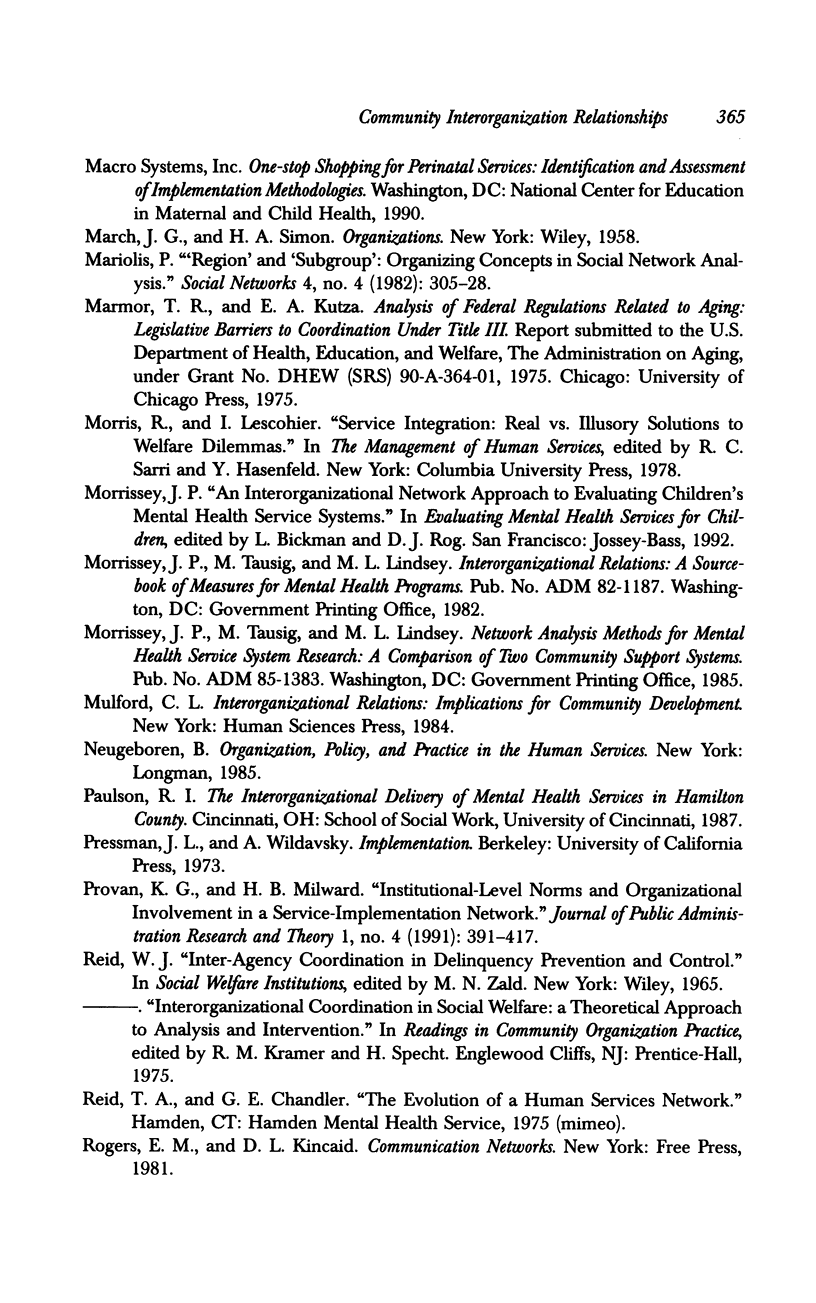

Selected References
These references are in PubMed. This may not be the complete list of references from this article.
- Alter C. F. The changing structure of elderly service delivery systems. Gerontologist. 1988 Feb;28(1):91–98. doi: 10.1093/geront/28.1.91. [DOI] [PubMed] [Google Scholar]
- Austin D. The politics and organization of services: consolidation and integration. Public Welf. 1978 Summer;36(3):20–28. [PubMed] [Google Scholar]
- Byles J. A. Problems in interagency collaboration: lessons from a project that failed. Child Abuse Negl. 1985;9(4):549–554. doi: 10.1016/0145-2134(85)90065-1. [DOI] [PubMed] [Google Scholar]
- Elmore R. F. Organizational models of social program implementation. Public Policy. 1978 Spring;26(2):185–228. [PubMed] [Google Scholar]
- Hochstadt N. J., Harwicke N. J. How effective is the multidisciplinary approach? A follow-up study. Child Abuse Negl. 1985;9(3):365–372. doi: 10.1016/0145-2134(85)90034-1. [DOI] [PubMed] [Google Scholar]
- Holder H. D., Stratas N. E. A systems approach to alcoholism programming. Am J Psychiatry. 1972 Jul;129(1):32–37. doi: 10.1176/ajp.129.1.32. [DOI] [PubMed] [Google Scholar]
- Wickizer T. M., Von Korff M., Cheadle A., Maeser J., Wagner E. H., Pearson D., Beery W., Psaty B. M. Activating communities for health promotion: a process evaluation method. Am J Public Health. 1993 Apr;83(4):561–567. doi: 10.2105/ajph.83.4.561. [DOI] [PMC free article] [PubMed] [Google Scholar]


